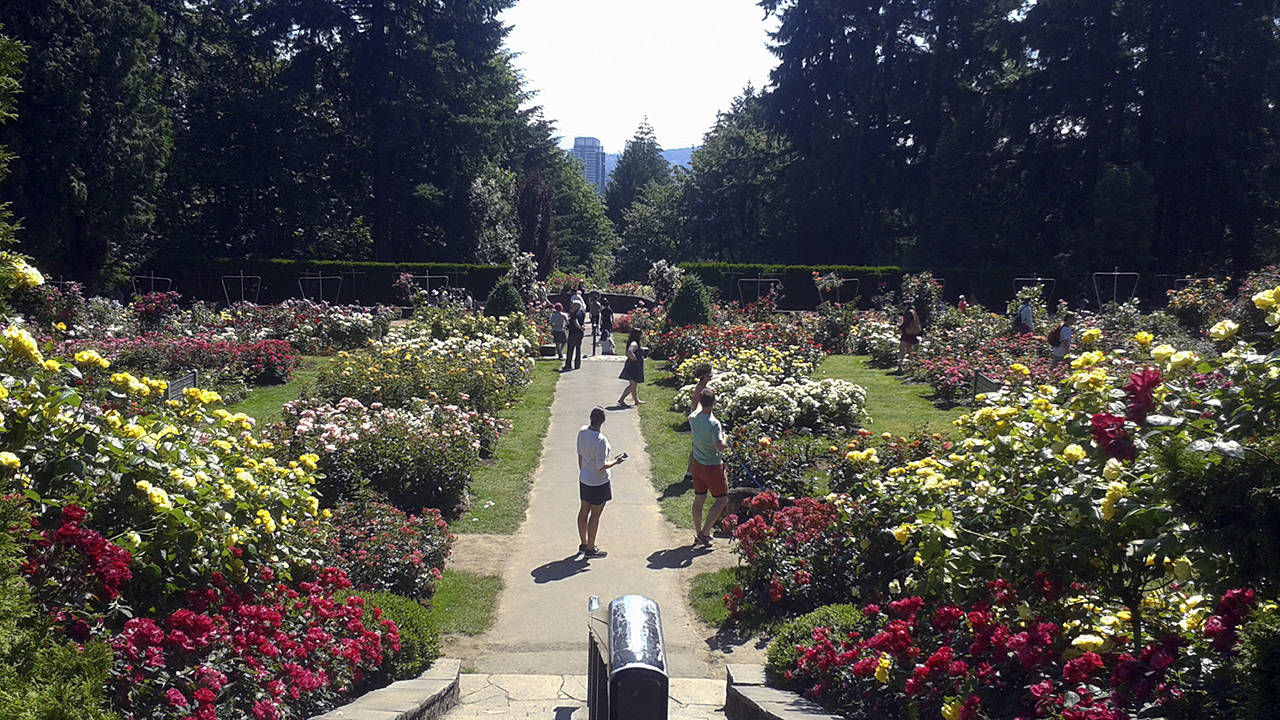By Katie Lutz
WSU Master Gardener
I took a course in Portland last summer, and during my brief free time I took a trip to Washington Park. That 410-acre park is home to over 15 miles of trails and attractions, such as the Oregon Zoo and the Portland Japanese Garden.
It also contains the International Rose Test Garden, which to my delight was entirely in bloom on the sunny day that I chose to visit! I walked through row after row of blooming roses in every color and growth habit imaginable, with bugs, birds and people wandering in between.
Portland is known as the “City of Roses,” and it stoked my curiosity as I viewed the garden to find out why.
From almost the time of its founding, Portland has had a love affair with roses. One of the city’s pioneers was Henry Pittock, who was born in London and went to Portland as a 17-year-old. In 1861, he founded the Oregonian, which went on to become the dominant newspaper in the state and made him a millionaire. He married Georgiana Burton, whose love of gardening, particularly of the rose, led to the foundation of the Portland Rose Society in 1888. The society was initially composed of their friends and neighbors. Mrs. Pittock would go on to host the first rose show in her garden in King Heights. It’s amazing to think how this couple shaped the identity of the city of Portland from its earliest years.
Later, with the city’s Lewis and Clark centennial celebration approaching in 1905, organizers and citizens became infatuated with the Madame Caroline Testout rose from Lyon, France. Admired for its large number of silky, rose-pink flowers, it swept through the gardens of Europe and America. It became so popular in Portland that, when the centennial rolled around, nearly half a million Madame Caroline Testout bushes were among the roses planted along more than 200 miles of streets. Visitors arriving for the celebration were suitably impressed by the spectacle and coined Portland’s nickname: the City of Roses.
In 1915, the International Rose Test Garden began to take shape from the ashes of World War I. Worried about the destruction of rose hybrids in Europe, Jesse A. Currey used his power as Sunday editor of the Oregon Journal to call for a rose test garden to preserve these hybrids. By 1918, roses were being sent to Portland from Europe, but there was no place to plant them. Design of the Test Garden began in 1921, and it was finally dedicated 1924. Currey served as curator until his death in 1927.
The garden has had many additions over the years. It became the home of the Shakespeare Garden in 1945, which features roses named after characters from his works. In 1967, a garden was added for Gold Award roses, the winners of the City of Portland’s annual competition for the best new variety. Finally, in 1975, the Miniature Rose Garden was added. It’s one of only six sites in the United States for the miniature rose test program run by the American Rose Society.
Additionally, the International Rose Test Garden is one of only 11 locations in the United States for the American Garden Rose Selections. This program gauges ease of care, disease resistance and suitability of specific breeds in various geographic regions.
Entry to the garden is free, though it does cost money to park. Volunteers help maintain the garden and lead tours.
Even when the roses are not in bloom, the park offers beautiful views and is enjoyable for strolls and picnics. If you get a chance, I highly recommend a visit to the International Rose Test Garden to see why Portland earned the name the “City of Roses”!
For more info, visit bit.ly/1GwcJky.
Katie Lutz, from Hoquiam, joined the WSU Master Gardener program in 2016.



